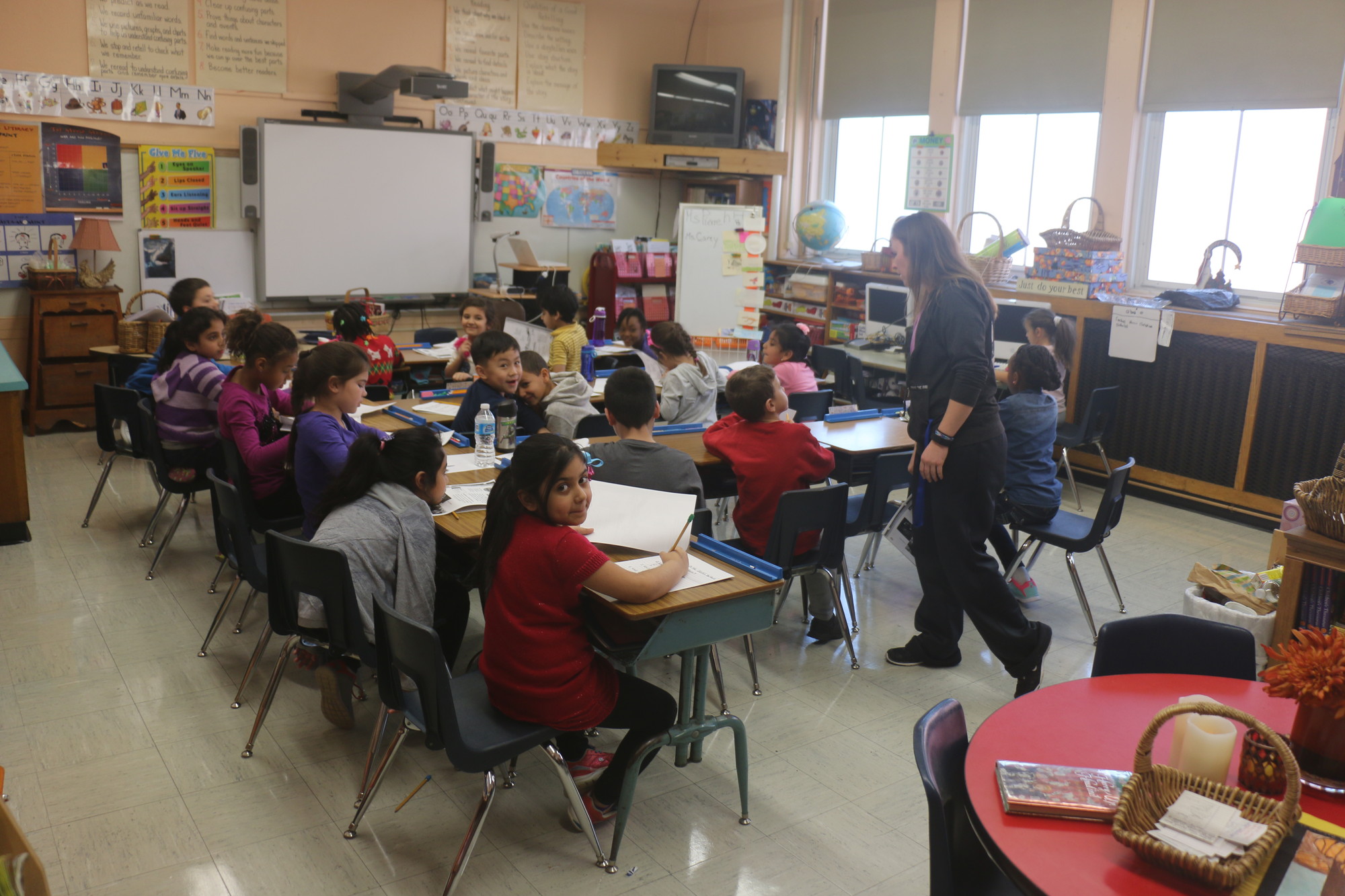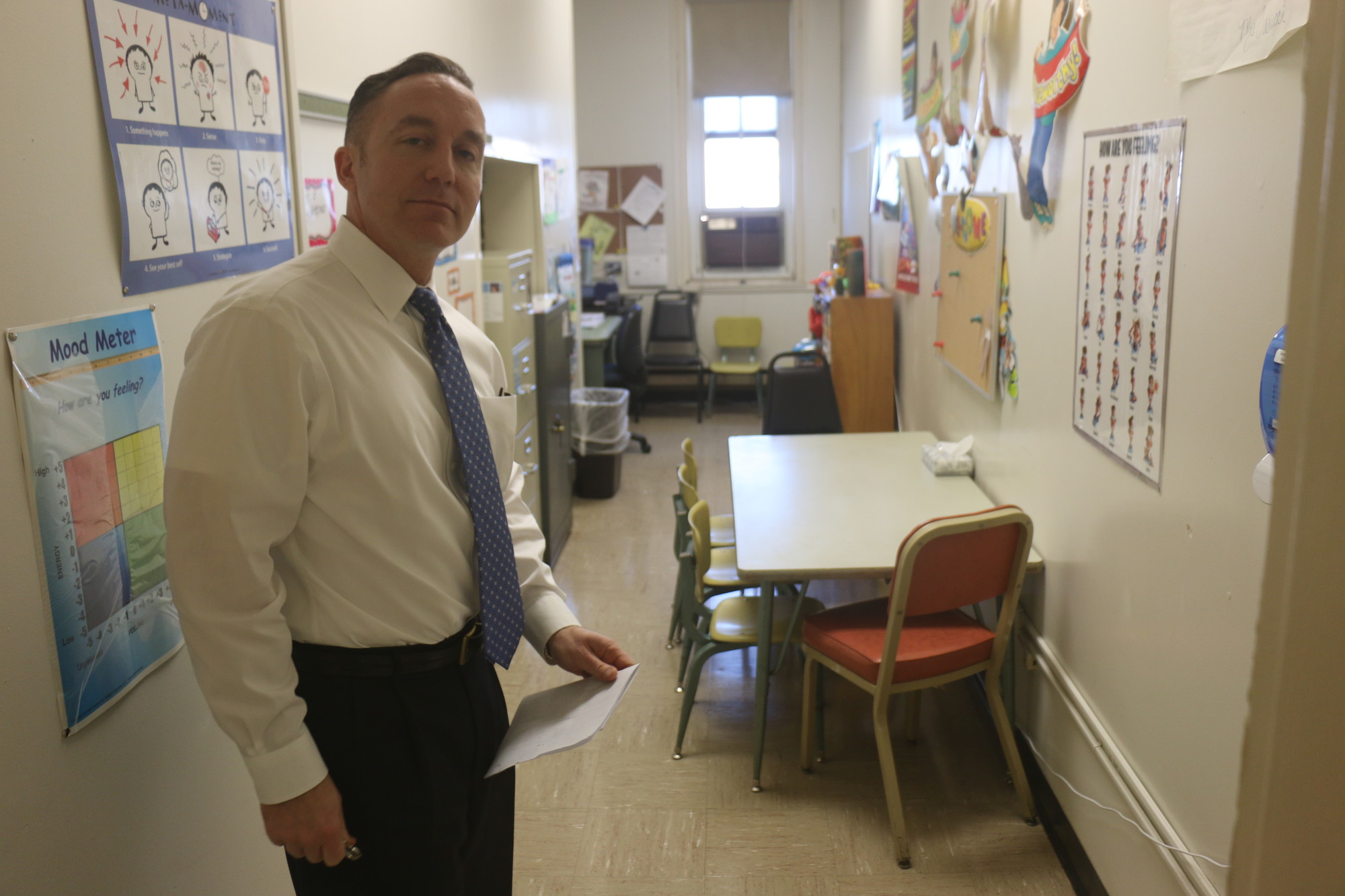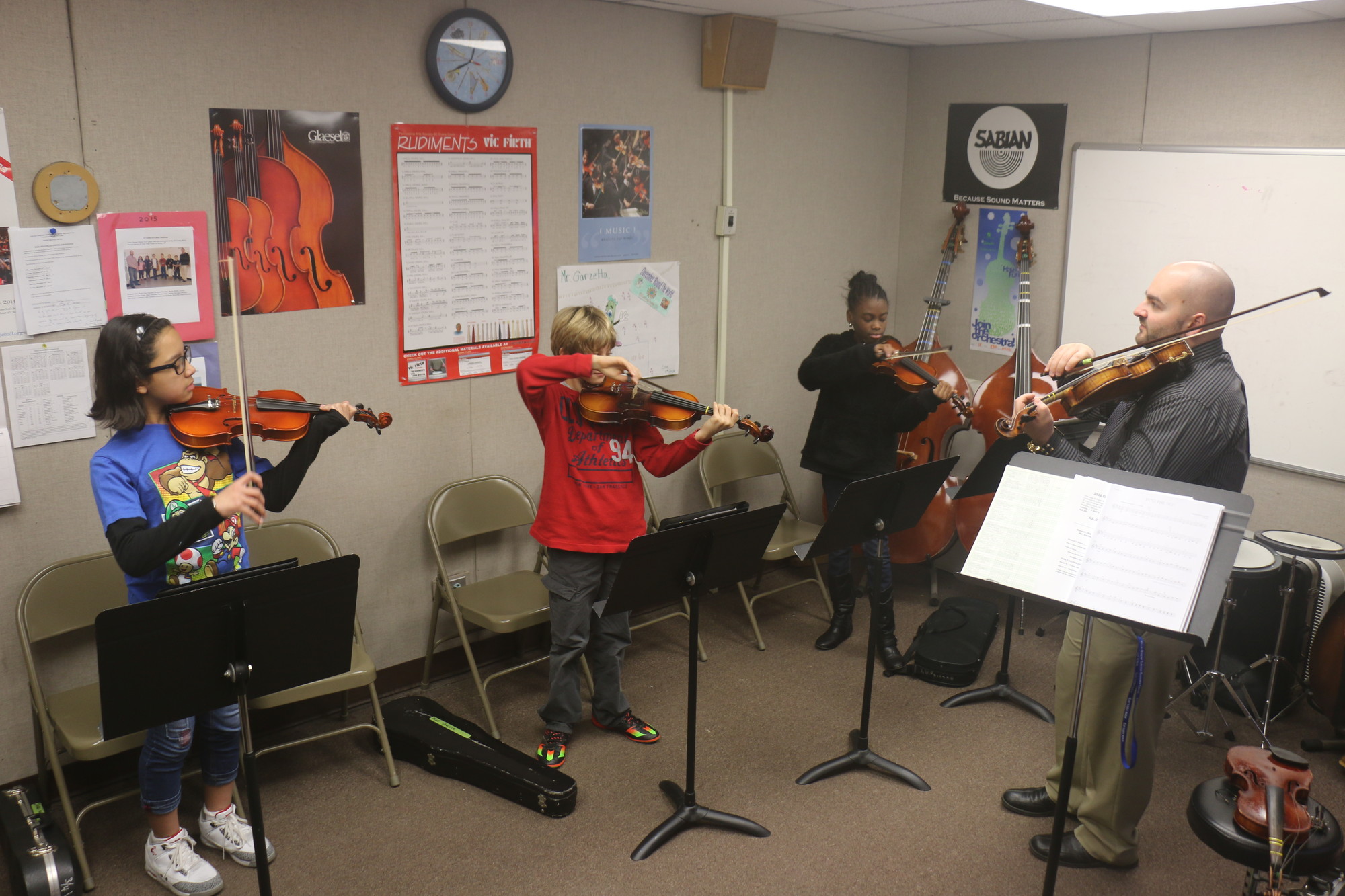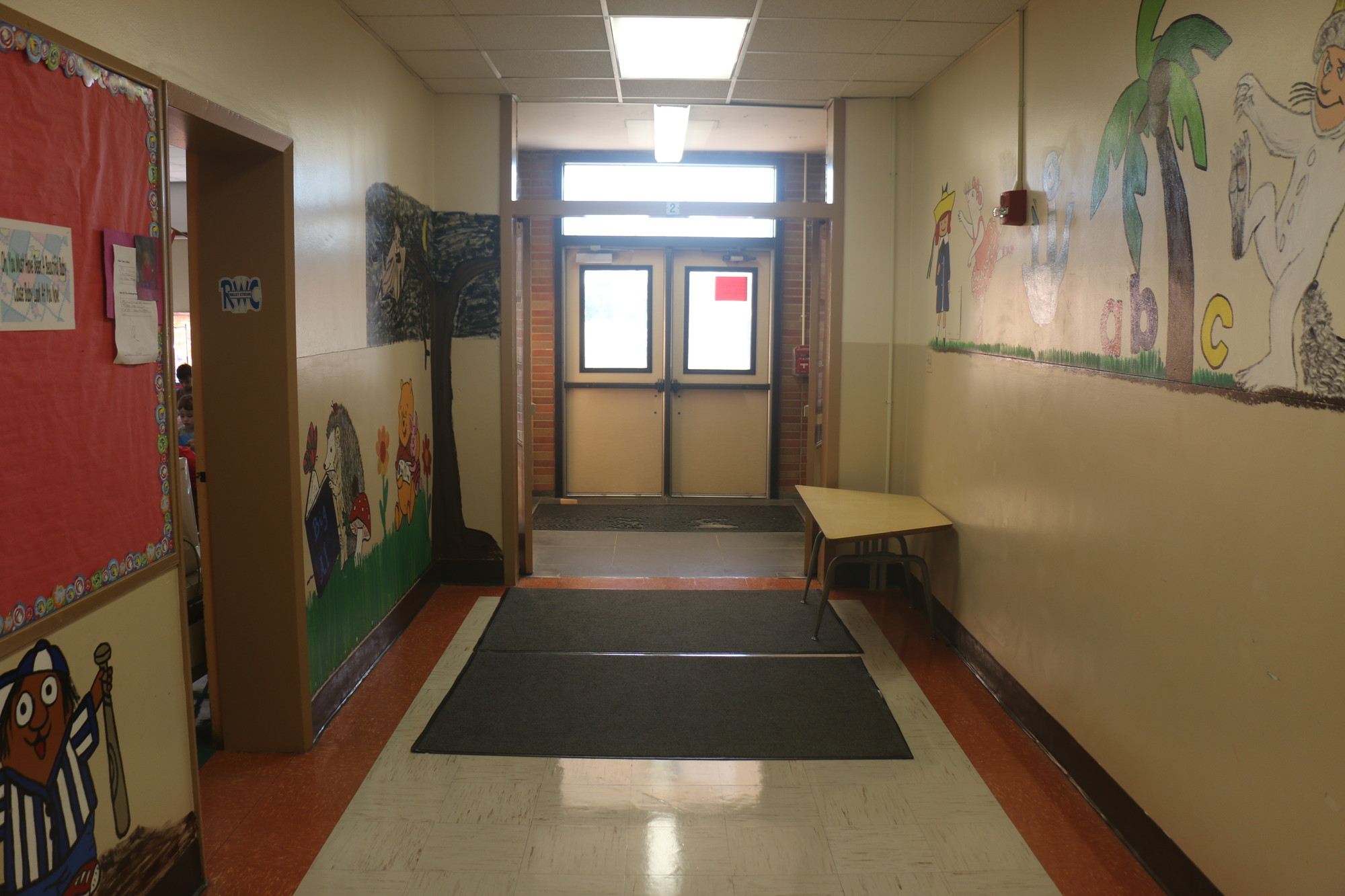District 24 is feeling squeezed for space
School board seeks input
District 24’s growing pains are visible: At William L. Buck Elementary School, the vestibule of an exit has been converted into a small teaching space for English as a New Language students. At the Brooklyn Avenue School, three staff members share teaching space in the 108-year-old building’s basement, next to the boiler room. At the Robert W. Carbonaro School, former storage rooms had windows cut in their doors, and now serve as instructional spaces.
“These are kids that need support,” said Rosario Iacono, principal of Carbonaro. He was standing in the primary math support room, which is adjacent to the music room and a reading support room, with all of their accompanying noise.
District administrators are preparing to address the capacity concerns at each building as they look to the years ahead, with questions about increasing enrollment looming, and a bond being considered.
“It’s a good thing,” said David LeWinter, a fifth-grade teacher at Buck. “People want to come to our community, so that’s a good thing, but our responsibility is that we make every effort to meet every child’s needs, so sometimes that requires us to move to an alternate space … Sometimes the hallway is that space.”
LeWinter said that the constraints have an impact on the way teachers teach. “It could be something as simple as instructing to a child’s level and having the other children working at their own level,” he said, “so now you’re in the same space trying to instruct two levels independently.”
There are 358 students enrolled at Buck, 345 at Brooklyn Avenue and 411 at Carbonaro. While each school has enough wiggle room to absorb more students, albeit “creatively,” school staff said, the buildings do not have enough space to accommodate the population increase that has occurred at Brooklyn Avenue in the last decade. In the nine years that Scott Comis has been the principal there, enrollment increased almost 10 percent, from 315 students to 345.
“It’s more of a challenge for the teachers to break the students into smaller groups,” Comis said.















